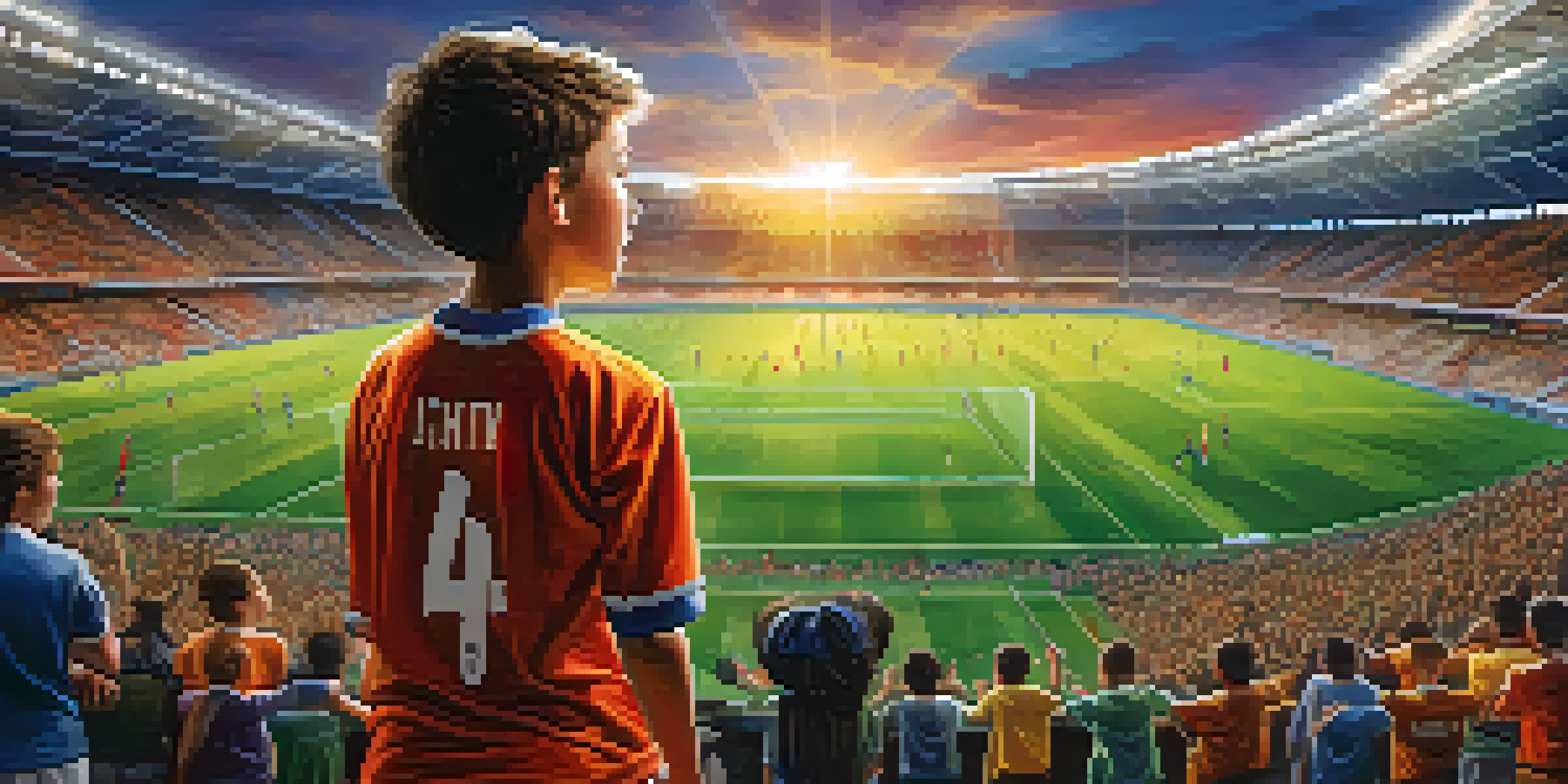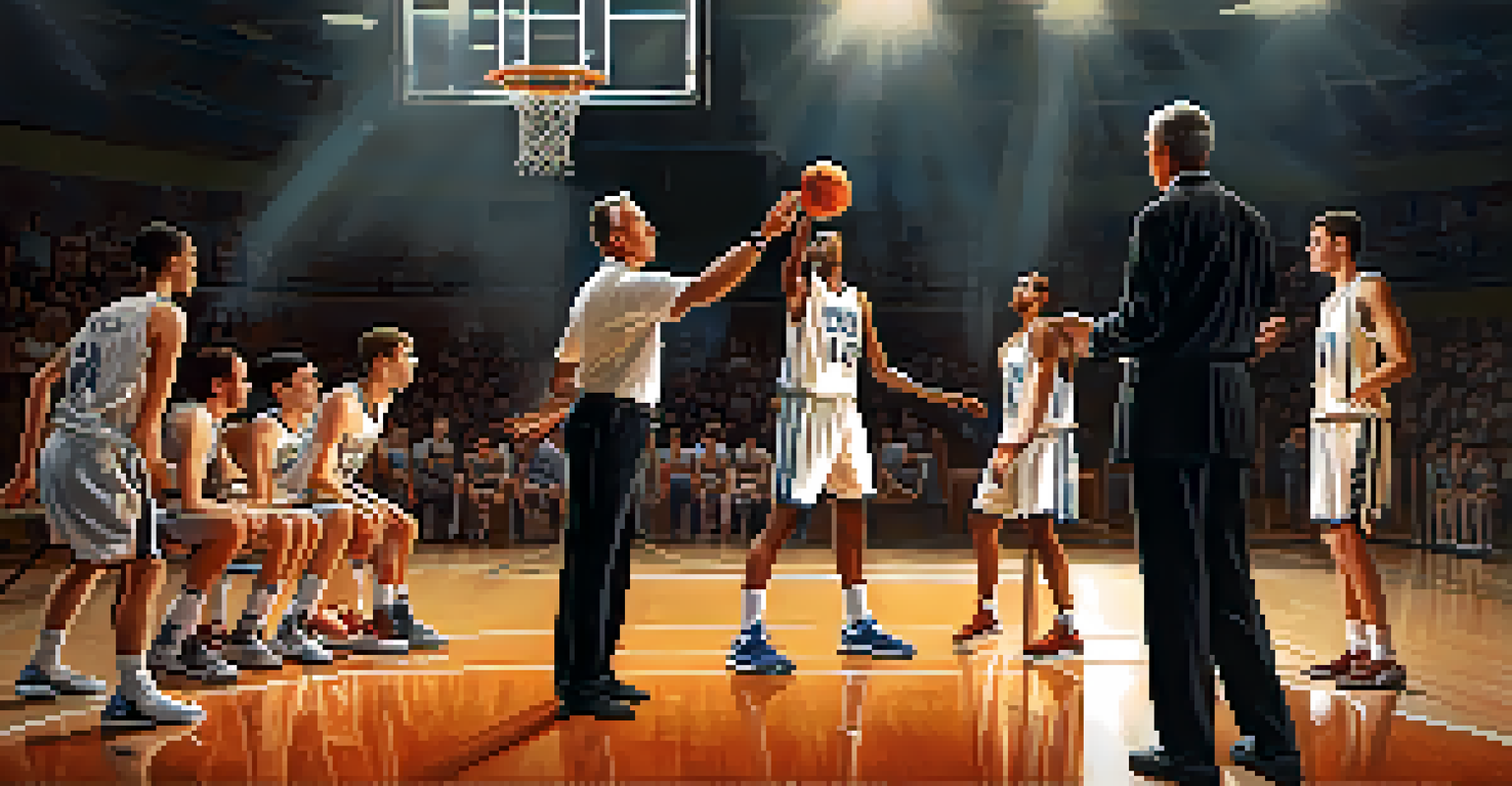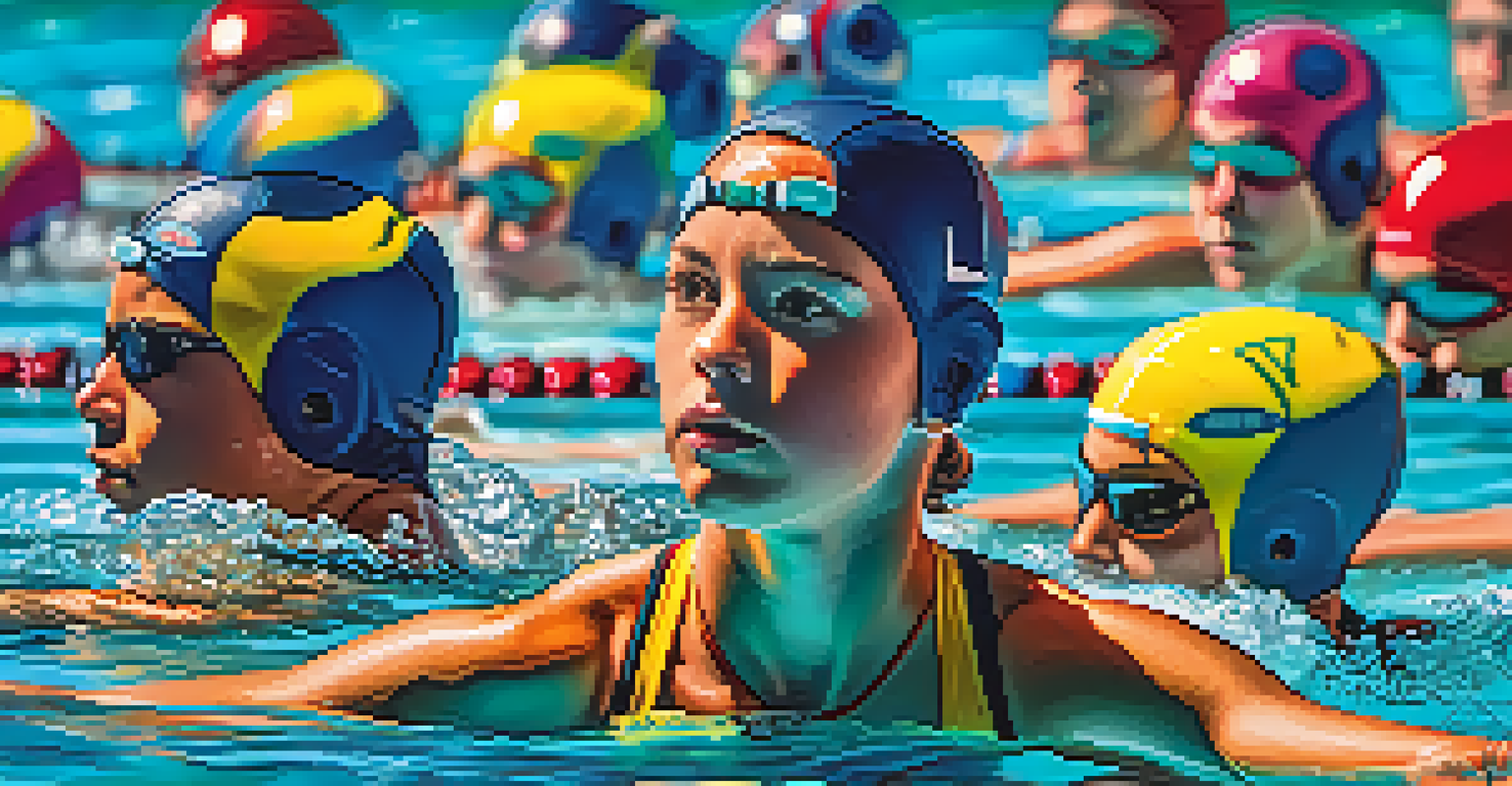Observational Learning in Sports: A Social Learning Perspective

Understanding Observational Learning in Sports
Observational learning is a powerful concept in sports, where athletes learn by watching others. Imagine a young soccer player observing a professional match; they pick up techniques, strategies, and even body language. This method of learning is not just passive; it actively shapes an athlete's skills and mindset. By seeing how seasoned players react in various situations, beginners can develop their own approach to the game.
The best way to predict the future is to create it.
This learning style is rooted in Albert Bandura's social learning theory, which posits that people learn from one another through observation, imitation, and modeling. In sports, this means that when a player sees a teammate execute a perfect pass, they are more likely to replicate that action in their own gameplay. It’s all about creating a mental blueprint that can guide future performance.
Moreover, observational learning can occur at any level, from youth sports to professional leagues. Coaches and trainers often encourage this practice, recognizing that watching skilled athletes can inspire and motivate their teams. By integrating observational learning into training, athletes can enhance their skills more effectively and efficiently.
The Role of Coaches in Facilitating Learning
Coaches play a crucial role in the process of observational learning. They not only teach techniques but also model behaviors that athletes are likely to imitate. For instance, a basketball coach demonstrating a shooting technique sets the stage for players to learn through observation. It’s about being a role model and providing a clear example for athletes to follow.

Effective coaching involves highlighting specific actions and decisions during practice sessions. When coaches pause to explain what they did and why, they deepen the learning experience for their athletes. This method encourages players to think critically about their own performance while also promoting an understanding of tactical decision-making.
Observational Learning in Sports
Athletes enhance their skills by observing and imitating others, creating mental blueprints for their own performance.
Additionally, coaches can leverage video analysis to enhance observational learning. Watching game footage allows athletes to see their own actions and those of their opponents, creating opportunities for discussion and improvement. This step not only reinforces learning but also fosters a sense of accountability among players.
Peer Influence and Team Dynamics
In the world of sports, peers significantly impact each other’s learning experiences. Athletes often look to their teammates for guidance, making team dynamics vital for observational learning. For example, a rookie player may closely follow the training habits of a seasoned team member, adopting their routines and techniques. This peer influence can accelerate skill development and foster a collaborative environment.
I learned that the only way you can really improve is by watching others. I’ve always been a big believer in observational learning.
Moreover, the social aspect of sports means that learning doesn’t happen in isolation. Athletes share insights, tips, and feedback with one another, creating a culture of continuous improvement. This camaraderie enhances not only individual skills but also overall team performance as everyone grows together.
Additionally, positive peer role models can inspire athletes to push their limits. When team members observe one another achieving goals, it ignites a sense of motivation and competition. This dynamic encourages athletes to strive for excellence, making observational learning a key component of team success.
The Impact of Technology on Observational Learning
Advancements in technology have transformed how athletes engage in observational learning. High-definition video analysis, for instance, allows athletes to study their performances in detail. With tools like slow-motion playback, they can dissect their techniques and learn from their mistakes. This immediate feedback loop is invaluable in accelerating skill acquisition.
Additionally, social media platforms have become a treasure trove of learning opportunities. Athletes can follow professional players, watch training videos, and even participate in live Q&A sessions. This accessibility to top-tier talent and their insights creates a rich environment for observational learning, regardless of geographical barriers.
Coaches Enhance Learning Experience
Coaches facilitate observational learning by modeling behaviors and using video analysis to deepen athletes' understanding.
Virtual reality (VR) is another exciting frontier in this realm. Athletes can immerse themselves in simulated environments, observing and practicing techniques in real-time. This innovative approach not only enhances learning but also prepares athletes for high-pressure situations they may encounter in actual competitions.
Challenges of Observational Learning in Sports
While observational learning can be incredibly effective, it comes with its own set of challenges. One major issue is the risk of misinterpretation. Athletes may observe a skill and attempt to replicate it without fully understanding the underlying principles. This can lead to the development of bad habits that are difficult to correct later on.
Another challenge is the potential for negative role modeling. If an athlete observes a teammate or a professional making poor choices, they might adopt similar behaviors. This highlights the importance of providing positive examples and reinforcing the right techniques during training sessions.
Moreover, not all athletes learn the same way. Some may thrive on visual learning, while others prefer hands-on practice. Coaches must recognize these differences and adapt their teaching styles accordingly to ensure that all athletes benefit from observational learning.
Case Studies of Successful Observational Learning
There are numerous examples of athletes who have harnessed observational learning to reach new heights. Take, for instance, Michael Jordan, who often spoke about how he studied his opponents to improve his own game. By observing their strategies and techniques, he was able to refine his skills and develop a competitive edge.
Another example is the way young swimmers learn by watching Olympic champions. Many aspiring swimmers imitate the starts, turns, and strokes of their idols, which helps them hone their abilities in the pool. This process showcases how observational learning can bridge the gap between dreamers and achievers in sports.
Technology Revolutionizes Learning
Advancements in technology, like video analysis and virtual reality, provide athletes with innovative tools to enhance observational learning.
These case studies illustrate that observational learning is not just a theory; it’s a practical tool that athletes can use to enhance their performance. By analyzing the habits and techniques of successful individuals, aspiring athletes can chart a path toward their own success.
Future Directions in Observational Learning in Sports
Looking ahead, the landscape of observational learning in sports is likely to evolve further. As technology continues to advance, athletes will have even more tools at their disposal to facilitate learning. From AI-driven analytics to immersive training environments, the possibilities are limitless. This evolution promises to make learning more personalized and effective.
Additionally, the integration of mental skills training will enhance observational learning. Athletes who are taught to visualize successful performances can reinforce what they learn from observation. This mental rehearsal technique helps solidify skills and strategies, leading to improved execution in actual competitions.

Ultimately, the future of observational learning in sports will hinge on a balanced approach that combines technology, peer influence, and effective coaching. As the sporting world continues to innovate, the potential for athletes to learn and grow through observation will only expand.